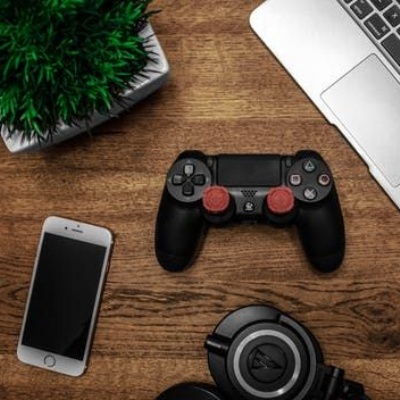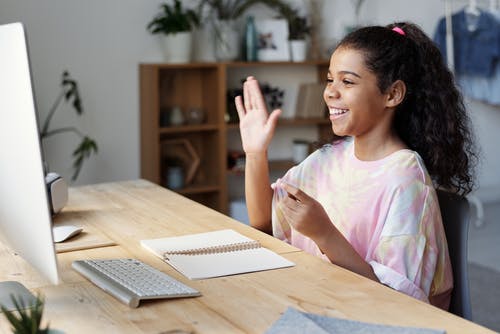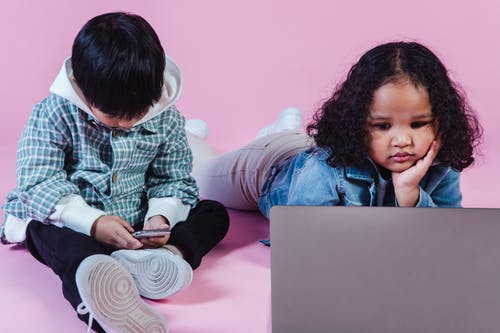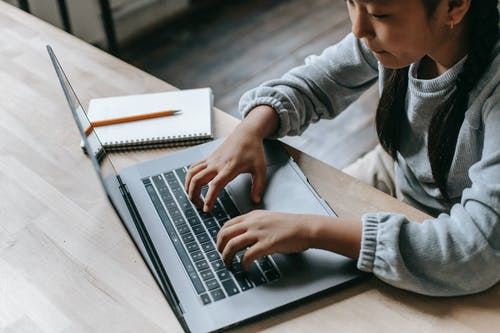Screen Time: Should I be worried?

Lockdown would be even worse without digital technology. At the moment, children are constantly on their screens for school work, fun, and talking to their friends. Use of social media platforms has soared.
Every day, we realise that we need screens more than ever – yet parents continue to worry about screen time. In one recent study, 42% listed screen time as a source of stress.
Should we be worried about the extra hours children are spending online in lockdown?
Not all screen time is equal

It’s no wonder really that parents worry about screen time, given the amount of contradictory advice on its effects.
Some groups continue to issue blanket warnings against digital devices. The American Academy of Paediatrics (AAP), for example, recommends that for children aged six or over “consistent time limits” should be placed on screen usage.
Other experts argue this is an out-of-touch approach – and that what you do on a screen is more important than how long you do it for. In the world we now live in, screens are everywhere, and it’s quality not quantity that counts.
In fact, screens may actually be good for you. Research by the Oxford Internet Institute at Oxford University suggests that children who spend time engaged in “television-based or digital device activities” are likely to demonstrate higher levels of social and emotional wellbeing than others.
The best approach may be to work out why your family are using screens, what they’re getting out of them, and what the costs are. Are they missing out on other things? (Perhaps not so much during the coronavirus crisis.)
Ask yourself whether screens are having a positive impact on their life during lockdown?
Does age make a difference?

Guidance published by the Royal College of Paediatrics and Child Health recommends that families should negotiate screen time with their children based on the individual needs of each child and the way in which they use their screens.
Trust your instincts when it comes to screen time. Babies and toddlers want and need stimulation of all kinds, and attention from their carers most of all. A bit of shared screen time is fine. Too much is depriving them of other kinds of learning.
For older children, of course, spending all your time doing any one thing isn’t very healthy. Certainly, sitting all day is quite bad for us. But if children are using their screens to make contact with their friends, that may well be the most important and valuable thing for them right now.
Think about the needs of your child and their circumstances. It’s not a bad idea to persuade them to take a break – but you shouldn’t feel you have to do it just because they’re on a screen, regardless of what’s actually happening on the screen.
Are there risks?
The type of content your child consumes is far more important than how much time they spend on their screens.
Your child is likely to be learning remotely, keeping in touch with friends on social media and video calls, and using screens for entertainment, whether laughing at a funny meme or watching cat videos on YouTube. All these things are fine. Doing any one of them all the time is less fine. (As our grandparents used to say, ‘moderation in all things’.)
Inevitably there are occasional risks. Your child’s screen usage may well have changed in the pandemic, and it’s important to keep having open conversations about what they enjoy doing online, plus what content they may have come across.
Some online risks may have been aggravated by the virus. There’s quite a lot of fake news about, for example.
It’s always a good idea to find out from your child what kind of risks they feel they face, and to talk about what to do if they come across content that troubles them.
Does screen time matter more at different times of day?

The Royal College of Paediatrics and Child Health suggests that screens should be avoided for an hour before bedtime, in case they disrupt sleep.
That said, it’s still important to consider what we’re using screens for at other times of the day and how they may disrupt other activities. Watching a Star Wars film in the evening is something the whole family can enjoy. Switching on Star Wars just before schooling starts is much less helpful.
Does it make a difference what type of device my child is using?
To an extent, yes. A study by Common Sense Media reviewed the usage of different screens, and broke them down into a model of consumption:
- Passive consumption: Watching TV, reading or listening to music
- Interactive consumption: Playing games and browsing the internet
- Communication: Video-chatting and social media
- Content creation: Using devices to make art or music
This helps us to think about how to use particular devices. For instance, putting all handheld screens away an hour before bed and using that time to watch a show is probably better for your child than scrolling through social media.
Watching TV is more passive. It doesn’t generate the same emotions as social media and – in theory – won’t keep us awake.
How can I monitor screen time?
Research into building online resilience suggests that the more children are controlled and monitored, the less likely they are to know how to respond when things go wrong. What’s more, monitoring doesn’t guarantee that they will be protected from risk.
It’s important for your child to think about their own screen time. Help them to establish their own boundaries.
You may find that your child is thoughtful about their own screen habits when they’re encouraged to talk about them, rather than turning the issue into a confrontation.
Of course there may be times when you want to set limits on screen time, and most digital devices, apps and services offer ways to do this.
If you have an Apple device you can access the screen-time settings through its ‘Family Sharing’ feature (or directly from your child’s device under ‘Screen Time’ in Settings). If you have an Android device you can access the screen-time settings through ‘Family Link’. Amazon’s child-friendly Fire tablets have a similar feature, available through the Parent Dashboard website or via the ‘Set Daily Goals & Time Limits’ option on the device.
These settings allow you to set time limits on apps and provide you with activity reports so you can see how much time your child is spending on their device.
Parent Zone has parent guides that cover parental controls across various platforms – including Snapchat, Instagram and TikTok.
This article was taken from the Parent Info website (https://parentinfo.org/) with the help of Parent Zone. Parent Zone provides information, help, advice, support and resources to parents, teachers, health professionals, police officers, internet safety officers and HR professionals - anyone who engages with parents.
